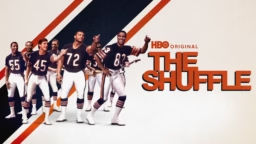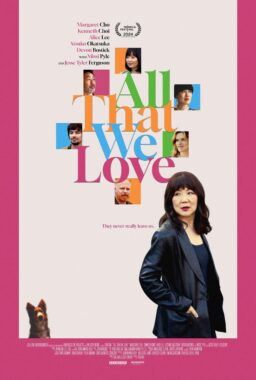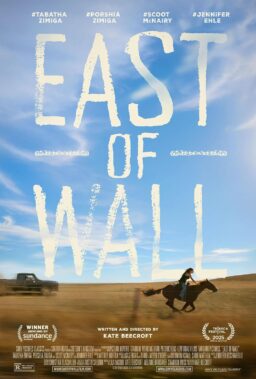This is a man with a message, with a gleam in his eye. He has seen the future. He has changed his life. He has found the answers. He is telling me this at 211 words a minute. That’s faster than Chris Matthews. I taped our conversation and divided the number of words by 45 minutes, which is how I know. He’s actually talking faster than that, because some of those words are mine.
His name is Robert Rodriguez, and to know him is to like him. He’s 34 now. When I met him he was 24, and had just made a film named “El Mariachi” for around $9,000, and it was a big hit. He shot it on a home camera and shoved it through the mail slot of an agent, and the rest is history. He had an enormous hit with “Spy Kids” (2001), a colorful and delightful family entertainment that cost $35 million and grossed many, many times that. Now he’s back with “Spy Kids 2: The Island of Lost Dreams.” He’s currently editing “Once Upon a Time in Mexico,” starring Antonio Banderas, Johnny Depp, Salma Hayek, Willem Dafoe and Mickey Rourke. He is a man who loves his work, his life, the world and especially the Sony 24-fps HD digital video camera.
This is the same camera that George Lucas used to shoot “Attack of the Clones.” It was developed by Sony to imitate the look of 24 frames-per-second film, and it costs around $100,000. It is not to be confused with the little cameras that most people think of when they think of digital video. Rodriguez believes the HD camera gives him a better picture than film. I disagree. But I’ve written so much on this issue, it’s only fair to let him have his say.
Besides, I agree with his other point: That it’s faster and cheaper than film, more like play and less like work.I was not his interviewer but his audience. Rodriguez is so exuberant, so talkative, that at one point I asked him about his good friend Quentin Tarantino, also known to wave his hands a lot and talk non-stop.
“When you’re in a room together, who stops?”
“I stop and I listen,” he said, “because I’m from 10 kids. He’s an only child, and he’ll talk and he’ll talk and he’ll talk.”
And Rodriguez quietly listens. Uh, huh.
It was Tarantino who told him he should make a third film to follow “El Mariachi” (1992) and “Desperado” (1995), so he would have a Mexican trilogy. Sergio Leone made ” A Fistful of Dollars” and “For a Few Dollars More,” both at bargain-basement prices, and then he made the epics “The Good, the Bad and the Ugly” and “Once Upon a Time in the West.” Rodriguez should follow in his footsteps.”
“Quentin challenged me,” he said. “He told me, ‘If you do a third one, it has to be “The Good, the Bad and the Ugly” of this series. It has to be the epic. And you have to call it “Once Upon a Time in Mexico.”
“I’m thinking, yeah, like when hell freezes over. I ain’t gonna to Mexico again and shoot on film; it’s so cumbersome. It’s like an anvil around your ankle creatively. I thought, I’m never gonna make that movie. But as soon as I saw the HD cameras, projects I thought were impossible, like that one … hey, I could shoot that in seven weeks, and it would look like an epic, like an old Technicolor movie, sharp as a tack. You’ll see every pore in every actor’s face like an old Sergio Leone movie. I prepared it in 2-1/2 weeks, told the studio we’ve only got seven weeks to shoot because the actors’ strike coming up. Went out. Shot it. They couldn’t believe we brought this huge movie back on time.”
The advantages of the HD camera, he said, are that you don’t need to spend so much time lighting everything, you can shoot on a moment’s notice, and you can see exactly what you’ve just shot. So you don’t have to do another take for insurance.
“It’s weird,” Rodriguez said. “Usually on a movie, you don’t see a finished print until the premiere. Now we see on the set better than what we even see at the premiere–digitally. So when an actor comes up to you and says, ‘You sure that was good?’ You say, yeah, have a look. You show him the digital monitor. You tell him, ‘This is the historical record. This is what it’s gonna look like at the premiere. You can see the sweat on your eyes.'”
So much of the film-based process of Hollywood is such a hassle. That’s why most directors only make one movie every three or four years. Coppola told me he loves directing movies, but hates making them. And when something creative is a hassle, something’s seriously wrong with the process. You look at a movie and you go, it cost that much? It had all this talent involved–and that’s it? That’s all you got? Well, I reverse the process.”
The Rodriguez Theory is that the less a movie costs, the more freedom he has. He demonstrated that definitively in “Spy Kids 2,” he said. The movie is another special-effects extravaganza with the two title characters (Alexa Vega and Daryl Sabara) competing with two rival Spy Kids to find the secret island of a mad scientist (Steve Buscemi). As before, the Spy Kids’ parents (Antonio Banderas and Carla Gugino) follow along to help, and this time, they’re followed by the Spy Kids’ grandparents (Ricardo Montalban and Holland Taylor).
“The studio said, because the first movie was a $36 million movie, next time spend $60 million. I said, ‘I know, you want it bigger and better. But give me the same budget, because the money’s not gonna do it. Being creative is gonna make it a bigger, better movie.'”
For example, there’s a scene where the two kids walk into a room, and they can’t hear each other talk, but suddenly they can hear each other think. That’s a great scene, and it costs five bucks, because it’s all in the idea. Better to think up stuff like that than worry, how am I gonna spend $120 million today?”
By now, Rodriguez was so warmed up, I felt like I was a studio executive, and this was his pitch.
“I production-design ’em so that I won’t overbill ’em,” he said. “You have Steve Buscemi standing around this little volcano. There’s only three rocks there. I put wheels on them so that when I shot at cross angles, I would roll the rocks over there and line them up and shoot them. The same rocks. And that kind of savings goes throughout. No production designer would ever allow the director to show up and see three rocks and tell him, ‘Oh, you can just move ’em, can’t you?’ But I know what I can get away with, so I save the money, which means I can have creative freedom and be imaginative like a child.”
“Spy Kids 2” went through most of its post-production process, Rodriguez said, in his garage, in Austin, Texas. Some towns have garage bands. Austin has garage movies. I remembered Richard Linklater telling me his “Waking Life” was post-produced in his garage.
“Once you’ve abandoned film,” Rodriguez said, “you question everything. You ask, why are we doing that like that? That’s why I mixed the soundtrack for this movie in the garage. I edited in my garage, I mixed the sound there. It’s 5.1 Dolby. It’s a very small garage, and I worked hard to emulate a big room sound.”
Austin is really the center of things these days, isn’t it?
“It’s only because we made it happen. It wasn’t like there was something that made filmmaking there easy. People don’t live there to work. They work to live there. Because everything’s accepted. You do mud-slinging artwork? Cool! Rick can go do his crazy animation thing. I’m making giant home movies. Mike Judge is doing ‘King of the Hill’ for TV. It’s got a lot of high tech now. And it’s a hippie hangout and an artist’s hangout and musician’s hangout.
“When the airport moved, I took over an old hangar and Rick Linklater, too–we just took hangars. and we made film studios out of them so we could shoot in there, so we could work at home. I don’t ever wanna feel like I’m working. I just wanna feel like I’m playing all day long. Playing with my kids, cooking food from scratch, making movies. It all goes together.”











